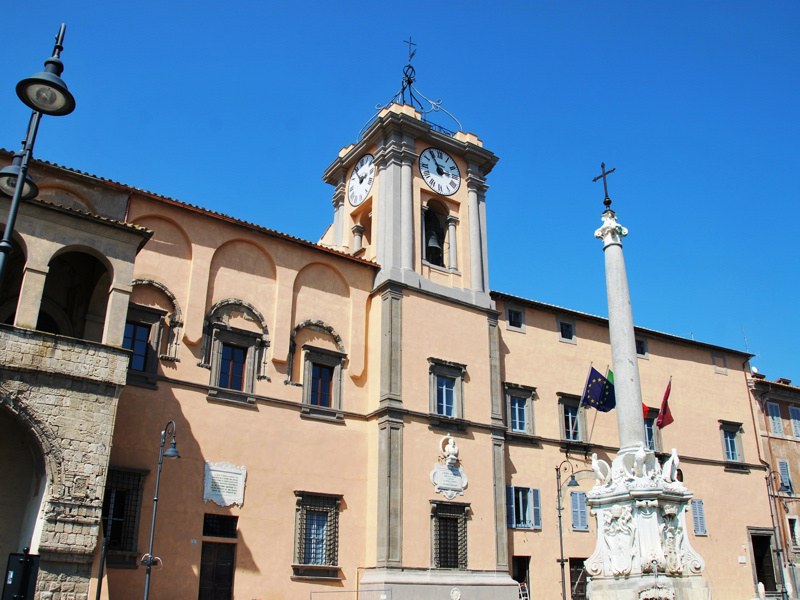Tarquinii (Etruscan Tarch(u)na etc.[citation needed]) is said to have been already a flourishing city when Demaratus of Corinth brought in Greek workmen. It was the chief of the twelve cities of Etruria.[1]
Descendants of Demaratus, Lucius Tarquinius Priscus and Lucius Tarquinius Superbus became kings of ancient Rome. From Tarquinii many of the religious rites and ceremonies of Rome are said to have been derived, and even in imperial times a collegium of sixty haruspices continued to exist there.[1]
In 509 BC, after the overthrow of the Roman monarchy, the family of Tarquinius Superbus went into exile in Caere in Etruria. Tarquin sought to regain the throne, at first by the Tarquinian conspiracy and, when that failed, by force of arms. He convinced the cities of Tarquinii and Veii to support him, and led their armies against Rome in the Battle of Silva Arsia. Although the Roman army was victorious, it is recorded by Livy that the forces of Tarquinii fought well on the right wing, initially pushing back the Roman left wing. After the battle the forces of Tarquinii returned home.[2]
In 358 BC, the citizens of Tarquinii captured and put to death 307 Roman soldiers; the resulting war ended in 351 BC with a forty years’ truce, renewed for a similar period in 308 BC. When Tarquinii came under Roman domination is uncertain, as is also the date at which it became a municipality; in 181 BC its port, Graviscae (mod. Porto Clementino), in an unhealthy position on the low coast, became a Roman colony. It exported wine and carried on coral fisheries. Nor do we hear much of it in Roman times; it lay on the hills above the coast road. The flax and forests of its extensive territory are mentioned by classical authors, and we find Tarquinii offering to furnish Scipio with sailcloth in 195 BC. A bishop of Tarquinii is mentioned in 456.[1]
The original residential quarters of the Etruscan city of Tarquinia, known as the “Civita”, were on the long plateau to the north of the current town. The ancient burial grounds, dating from the Iron Age (9th century BC, or Villanovan period) to Roman times, were on the adjacent promontories. The ancient city had shrunk to a small fortified settlement on the “Castellina” location during the early Middle Ages, while the more strategically placed Corneto (possibly the “Corito” mentioned in Roman sources) grew progressively to become the major city of the lower Maremma sea coast, especially after the destruction of the port of Centumcellae (modern Civitavecchia). The last historic references to Tarquinia are from around 1250, while the name of Corneto was changed to Tarquinia in 1922. Reversion to historical place names (not always accurately), was a frequent phenomenon under the Fascist Government of Italy as part of the nationalist campaign to evoke past glories.

